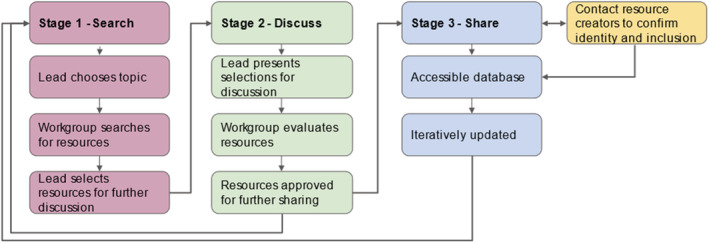Researchers make recommendations for diversifying syllabi in higher education
Over the past decade, there has been a growing awareness that environmental and life science fields need to diversify their teaching syllabi. Many have suggested highlighting Black women scholars, hidden figures in the fields, and elevating Black, Indigenous, and People of Color scholars. However, faculty sometimes worry that their solitary efforts could be harmful or ineffective.

Through this paper, the researchers wanted to set up a structure that would help them systematically go through different types of resources and figure out if they meet the aims of diversifying syllabi.
“In general, syllabi can benefit from having more considered curricula. Especially in genetics, data accountability, data sovereignty, health implications for data analysis, and the ethical, legal and social implications of your data should be fundamental aspects of the syllabi,” added Alida de Flamingh, a postdoctoral researcher at the University of Illinois Urbana-Champaign.
“During my undergraduate years I realized that there was often a lack of both cultural and historical understanding of topics. Students and teachers make assumptions based on their own backgrounds and understandings about a topic simply because they have not been exposed to anything else,” said Tolulope Perrin-Stowe, a postdoctoral research associate in virology at the University of Wisconsin-Madison. “When I was a graduate teaching assistant, I found that when people shared different understandings and experiences, it led to more robust discussions.”
The researchers recommend that before teaching any class, the faculty first need to acknowledge how factors such as race, gender, settler status (being Indigenous or a settler to a place), geographic location, sexuality, and class background could impact their course material.
“You can’t change something that you can't recognize,” de Flamingh said. “You need to first understand how systemic oppression has manifested in the course curricula at your university. Only then will you understand how your teaching affects your students.”
The paper highlights lesson plans, online resources, and social media tools that instructors can use to develop their syllabi. Since such a change can seem overwhelming, developing a buddy system is helpful. “Build a network with other people who are also undergoing this journey. Don’t try to do this alone and don’t try to reinvent the wheel. A lot of this work has already been done and there are many resources available online and within institutions,” Perrin-Stowe said.
Broadly, there are three steps that the instructors need to follow to amend their syllabi. First, they should choose content that not only highlights BIPOC historical figures, but discusses the challenges they face, and provides a critical assessment of scientists by discussing their contributions to a field without ignoring their problematic views on race. Second, the educators should discuss their lesson plans with their network to identify problematic areas. Finally, they can share their work with other faculty through online repositories.
“It is a lot of difficult work and instructors need to recognize that although they will make mistakes, it is a part of the learning process,” Perrin-Stowe said.
The researchers also warn that even with a robust support system, educators will likely have to deal with prejudice, threats, or bullying in their classrooms, whether intentional or not. According to de Flamingh, this challenge can be exacerbated in institutions that are not open to redesigning their curricula.
“Work that involves challenging paradigms can be very uncomfortable. However, allowing students to ask questions and being able to answer them will help everyone understand the issues better,” Perrin-Stowe said. “Even though it is the toughest part, it is where the most important work is done.”
Although the paper may not cover every aspect of developing a diverse curriculum, the researchers have prioritized including different viewpoints from different science fields in their recommendations. “The only reason our group works is because we are a diverse and passionate team of early-career researchers who are individually dedicated to increasing diversity in STEM,” de Flamingh said.
The paper ““Where do I even start?” Recommendations for faculty diversifying syllabi in ecology, evolution, and the life sciences” was published in Ecology and Evolution and can be found at 10.1002/ece3.9719.
The other authors include Melissa Horner, a graduate student in sociology at the University of Missouri; Jamie Coon, an assistant professor of biology and environmental sustainability at Earlham College; Lauren Lynch, a graduate student in natural resources and environmental sciences at the University of Illinois; Nathan Alexander, a graduate student in natural resources and environmental sciences at the University of Illinois; Elizabeth Golebie, a postdoctoral research associate in natural resources and environmental sciences at the University of Illinois; Timothy Swartz in ecology at Temple University; Alyssa Bader, a postdoctoral fellow at the University of Colorado Boulder; and Samniqueka Halsey, an assistant professor of natural resources at the University of Missouri.
